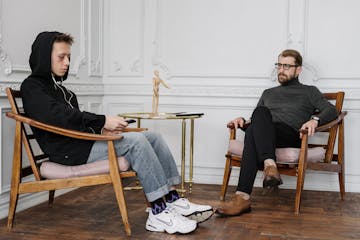The debate over whether the veil and the burqa represent forms of oppression for women is a complex issue that has generated conflicting opinions in different parts of the world. These garments, which are part of traditional clothing in some cultures and religions, have been the subject of controversy due to divergent interpretations of their meaning and their impact on the rights and autonomy of the women who wear them.
Origins and cultural meanings
To understand the discussion around the veil and the burqa, it is important to take into account their origins and cultural meanings in the societies where are used. Both the veil and the burqa have historical and religious roots that go back to ancestral traditions in various parts of the world.
In the Islamic context, the veil can have different interpretations depending on the region and religious current. Some Muslim women use it as an expression of modesty and religious devotion, while for others it represents a form of cultural identity and political resistance. In certain societies, the veil has been imposed by social or legal norms that limit women's freedom of choice regarding their clothing.
On the other hand, the burqa, which completely covers the face and The female body is a garment primarily associated with some communities in Afghanistan and other regions of Asia. Its use is linked to conservative interpretations of Islam that promote gender segregation and the protection of female modesty.
Arguments in favor of oppression
One of the main arguments against veil and burqa is that these clothing symbols can perpetuate patriarchal norms that subjugate women and limit their participation in the public sphere. By forcing women to cover up, it is argued that gender stereotypes are reinforced that relegate them to traditional roles and exclude them from educational and employment opportunities.
In addition, it is argued that the imposition of the veil or the The burqa can have negative psychological effects on women, generating feelings of shame, anxiety or even depression related to social pressure to comply with expectations of modesty and chastity imposed by society or religion.
Arguments against of oppression
On the other hand, those who defend women's right to wear the veil or burqa argue that these garments are a personal choice and an expression of cultural and religious identity. For many women, wearing the veil represents an act of empowerment and autonomy in deciding how they wish to present themselves in public and how to interpret their faith.
Furthermore, it is argued that banning the veil or burqa could be equally oppressive. , as it would limit women's freedom to express their identity and beliefs through their clothing. Setting restrictions on the way women can dress could be interpreted as a form of control over their bodies and individual rights.
Impact on women's autonomy and rights
The debate over whether the veil and burqa represent forms of oppression also focuses on the impact these garments have on women's autonomy and rights. Some critics argue that the mandatory use of the veil or burqa reflects patriarchal power structures that limit women's freedom of choice and reinforce gender inequality.
On the other hand, defenders of freedom of expression and religion argue that banning the veil or burqa could constitute a violation of fundamental human rights, such as freedom of religion and freedom of expression. Imposing restrictions on clothing based on cultural or religious interpretations could be detrimental to the principles of equality and cultural diversity in a pluralistic society.
The role of culture and education
To effectively address the issue of the veil and burqa as forms of oppression for women, it is crucial to take into account the role of culture and education in promoting gender equality and respect for individual rights. The influence of cultural and religious norms on the perception of women's clothing cannot be overlooked in this complex debate.
Education plays a fundamental role in raising awareness about women's rights and promoting of gender equality. By fostering intercultural dialogue and mutual understanding, stereotypes and prejudices that perpetuate the oppression of women in different social and religious contexts can be overcome.
Reconciling differences
Ultimately, Addressing the issue of the veil and the burqa as forms of oppression for women requires an approach that recognizes the diversity of experiences and perspectives around these items of clothing. It is important to foster a respectful and empathetic dialogue that allows women to express their points of view and experiences without feeling judged or stigmatized.
By promoting education in human rights and gender equality, progress can be made towards a more inclusive and fair society where all people, regardless of their gender, can live with dignity and plenitude. Respect for autonomy and cultural diversity must be the pillar on which solutions that promote well-being and equality for all women are built.
Author: Psychologist José Álvarez


